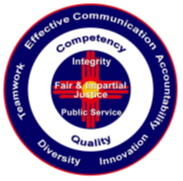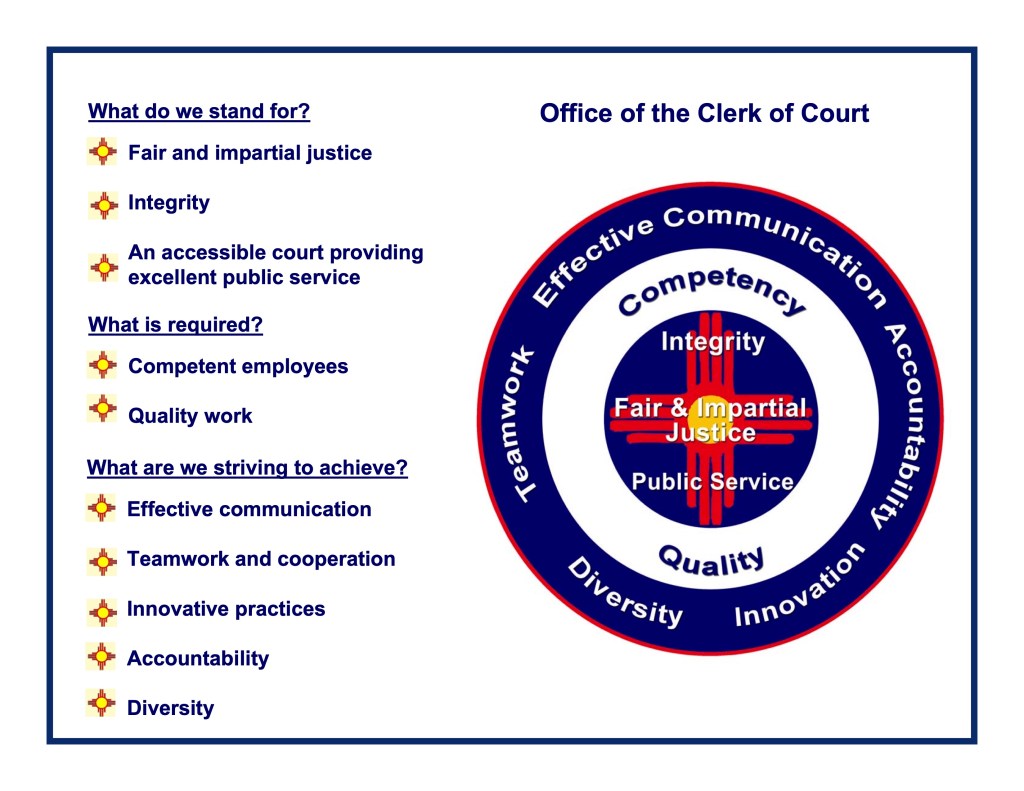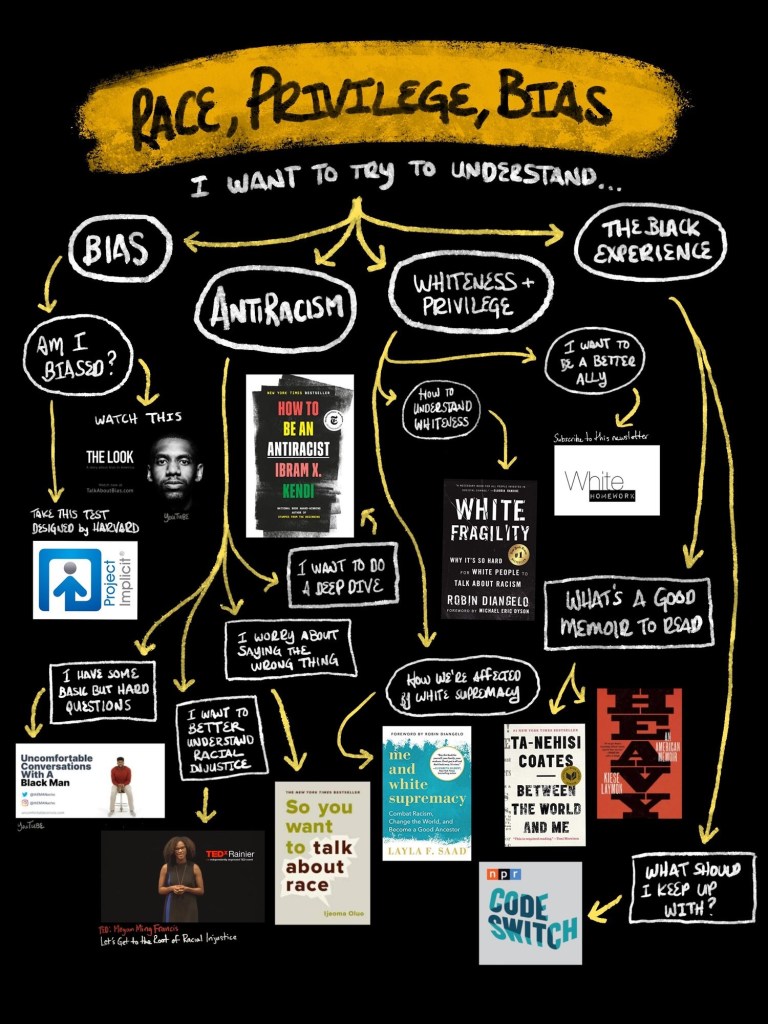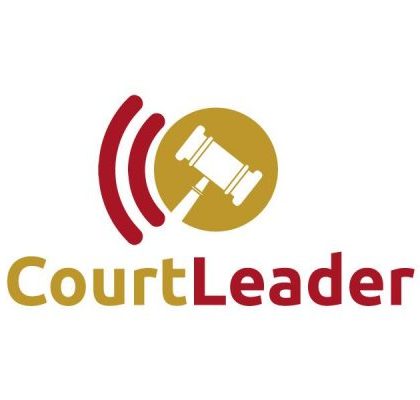
NOTE: This post continues the court values discussion on Diversity & Inclusion started in the last Vantage Point blog post (https://courtleader.net/2020/07/01/fulfilling-the-publics-trust-valuing-diversity-amp-inclusion-in-2020-part-1/).
As stated there, the topic of Diversity & Inclusion is particularly relevant in this moment of widespread protests about, and attention to, systemic discrimination in our justice systems (and beyond).
Once, during an interview for a Clerk of Court job one of the judges on the interview panel asked me how many minorities were represented in leadership roles in my current court. I answered the question, and later learned that the former Clerk of Court there had a long history of discriminating against minorities. In fact, in an office of well over 100 employees in four cities, all the supervisors and managers were white. I got the job, and in the first few months the Financial Manager retired. We did a recruitment and hired a great candidate with court experience and C.P.A. certification – who happened to be a minority (black). The next time I saw the judge who asked the interview question about minorities, he congratulated me about the hire and how it had sent a profound message to the entire court that things had changed.
This story illustrates several things. First, discrimination has continued to exist in the judicial systems of our country up to the present. Next, hiring practices are a key means to rectify wrongs and improve workplace diversity. Finally, taking visible actions sends a powerful message to the entire court community about the importance of diversity.
Part 1 of this series described what Diversity & Inclusion (D&I) are, and how they are important to the success of any organization. In this post I will elaborate on what actions I think court administrators can take to make D&I a reality in their courts.
True D&I starts with each of us individually. To be an effective leader we must first personally acknowledge the importance and legitimacy of the subject, followed by doing everything we can to understand and be aware of its history and parameters. We must listen to the voices all around us that can help us become better agents of change. Unfortunately, too few of us take the trouble to truly understand the differences we all have, accept those differences, avoid prejudging others, and clearly reject intolerant behavior. I have listed a few resources at the end of this post to help us educate ourselves, and highly recommend the article Framing Diversity and Inclusion for Court Managers: The Path to Justice for All, by Zenell Brown.
Once we have personally committed to the importance of D&I, the next step is to gain the commitment of the court’s judges to the cause. This may not be easy, but it is critical to gain the buy-in and backing of the bench to set the stage and achieve success. Next, integrate D&I into the court’s vision, mission, goals, and objectives. These actions establish a fundamental environment that support (and require!) all of the other efforts described below. Communicate the commitment of the court’s leadership to D&I to all staff, not only at the outset but repeatedly over time to reinforce the message that D&I are a priority.
It is not enough to say the right things. One must develop and ensure that all policies, rules, and procedures are aligned with the court’s D&I vision and mission. Make it clear that you expect everyone, especially those in leadership roles, to live up to D&I. Include D&I language in job descriptions and performance standards. Designate a leader to be responsible for the court’s D&I efforts to ensure long-term follow up.
The court administrator must also understand the organization – what kind of culture does it have? We think we know, but too many of us only have superficial awareness. There is a good chance a group identity exists that is not welcoming of all people, or that employee and managerial styles are normed around male-socialized leadership behaviors, for example. Make the effort to find out the real situation, and then proactively adapt your D&I actions accordingly to eliminate bias and intolerant behavior wherever they exist.
Similarly, know your community. Who does your court represent? What are the demographic characteristics of the community you serve? Gather data and any other information to fully understand the people and the environment your court works within. This information will inform your actions and help ensure your court reflects its community and is doing its best to fulfill its D&I vision.
An absolute critical action area is Workforce Management (HR). This area spans everything from recruitment to development to performance management to supervision of staff. The goal is to build and retain a diverse organization. Since it is so important, let’s walk through the various areas of workforce management:
- Recruitment
- Begin by working to develop sources of qualified applicants; reach out to groups and organizations in your community that represent and serve diverse groups. Certainly, include local educational institutions, but also consider community centers, religious groups, and non-profit organizations. Work with them to not only inform about career opportunities and job openings, but also how you might partner to develop qualified applicants via training programs, internships, and even just speaking engagements.
- Make sure the qualification standards of job postings match the job and do not adversely affect the applicant pool. For example, does the job really require a degree or certification that may screen out minority applicants? Even adding “some college preferred” instantly eliminates a large number of potential applicants. Ask why you are imposing educational requirements, and if they do not serve a valid purpose, find other ways to identify strong candidates.
- Publicize job openings widely, because where you advertise can dramatically affect the applicant pool. You will not get a diverse applicant pool if you only advertise in the old, same, comfortable place. For instance, many communities of color have free weekly papers, radio stations, or organizations that have job boards that reach people who are good candidates, but who will never look at online job posting sites. For example, contact groups like The National Urban League (only one example of an African American group), which has chapters in most cities, as well as local Latinx, Asian, LGBTQ, disabled, veterans, and religious organizations that can help reach diverse applicants. The added benefit is many of these organizations have programs that prepare people for interviews and help mentor them on the soft skills entry level employees may not already possess.
- Allow applicants multiple ways to apply. Requiring applicants to exclusively apply on-line, especially for entry level positions, can be challenging for many people. Not all people have a laptop and unlimited Internet access, and the public library may not be a good solution. While on-line applications may simplify the process, you need provide alternate paper methods (fax? mail? drop off?), or as some places do, set up a location to allow applicants to fill out their applications at the court.
- Use a selection process that is fair and inclusive. Make sure the screening elements are directly related to the job and the job posting. For instance, are skill tests valid? The initial screening process is best done by a trained human resources staff person who works to ensure only valid criteria are used. Designate a diverse interview panel of at least three people and use standard, job-related questions to evaluate the applicant’s qualifications and potential. Be particularly attentive to eliminating bias in the interview, where implicit biases can easily rear their head. All interviewers should have received training on how to avoid such bias. Do not require online video interviews (see reasons above regarding online applications).
- All of the above recruitment steps basically apply even when you are selecting an internal applicant for a promotion. Conduct a wide, inclusive search that uses unbiased selection criteria and processes.
- Staff Development
- People are the most valuable part of your organization, so invest heavily in helping staff improve and “be the best they can be.” Staff development should be part of every court’s strategic plan. Development goals for the court and each employee are important and should include D&I elements. A colleague of mine once told me that “too often, organizational efforts at fostering a diverse and inclusive environment are limited to one-off ‘training’ and have no strategic plan, metrics for success or accountability for employees, supervisors or senior leaders. This means there is no real change and people become cynical. The result is we just continue to admire the problem.” Make sure your court does not fall into this category! Ensure that relevant training, coaching, and mentoring routinely reinforce the court’s D&I goals, and that follow up assessments are conducted. Listen to your court’s D&I leader and encourage that person to be active and vocal. Finally, staff development is critical to creating a qualified, diverse internal applicant pool for leadership positions in the court.
- Performance Management
- Hiring and developing staff are critically important, yet there also needs to be an assessment component to measure how the court, its leaders, and staff are performing in achieving D&I goals. Otherwise, you will likely be unable to identify problem areas and not know if you are making progress. The information gained in performance assessment is vital to planning and measuring improvement actions at both the court and individual employee levels. Care must be taken, however, to use valid metrics.
- Supervision and Leadership
- Although it is obvious that supervisory actions, such as work assignments and promotions, must be free of bias and support D&I goals, that is not enough. Simply put, you must “walk the talk” with your actions. This is absolutely critical to have true inclusion on the workplace. It is easy to say the right things, but you have to put those nice words into practice every hour of every day. For instance, is everyone given equal opportunity to speak up and contribute in meetings and other work activities? As a wise colleague told me, “if you aren’t invited to the table, you are on the menu.”
During my career I wrote ten “value statements,” including “valuing diversity,” to document my fundamental beliefs as a court leader (I have written about several of them in previous blog posts). I regularly devoted time in staff meetings to explain what these value statements meant and to answer questions. We gave each employee desktop coasters with the value statement names and created framed posters we hung in prominent work areas. Here is what they looked like:

Visual reminders like these posters keep your message front and center to all staff.
Effective D&I efforts include a lot more than the workforce management elements explored above. Here are ones I think are also important:
- Specifically include D&I efforts in the court’s budget to support training and other actions that need fiscal support.
- Develop courtwide measures for the effectiveness of D&I efforts, and use them to refine strategies and actions to keep improving over time.
- “Walk the talk” not only internally with court staff, but also with external users to increase accesibility. For instance, are public restrooms welcoming for diverse users? Are the court’s signs helpful for all users? Are diverse users able to use the court’s electronic services, including web services like e-filing and virtually attending court hearings/trials?
- Partner with other entities in your D&I efforts. Certainly, do so with justice system partners to coordinate efforts, but also partner with outside non-profit groups that can help.
- Support opportunities for staff to be involved with the D&I community, as well as associated employee resource groups.
- Celebrate diversity by observing special days/weeks/months dedicated to specific groups. Invite representatives to make cultural presentations (music, dance, etc.), hold themed lunches, and so on. Tap into the ideas and resources of staff, as well as outside groups. Celebrate diversity by publicly sharing when and how the court’s commitment to D&I has helped achieve the court’s mission, including in employee awards programs.
- Have a robust employee suggestion and complaint system that provides staff with avenues to speak out and raise concerns. Care must be taken to maintain confidentiality when appropriate. A complaint system should be fair and have multiple options for resolving issues, including involving outsiders for such things as mediation and having a third party with authority to take any needed action.
Current events have highlighted the need for all of us to reflect, reassess, plan, and take action to make improvements in D&I within our justice systems. In this blog post I have outlined a wide range of things court administrators can and should do to make such improvements. It can seem like a daunting list, but the important thing is to first educate oneself, then commit to prioritizing and implementing positive actions a step at a time. I believe the most important thing, however, is to make sure your organization’s workforce management is done well. Everything else builds upon that foundation.
Throughout my life I have been inspired by the example of my father, Norman Meyer Sr. His lifelong commitment to civil rights through personal action taught me the importance of Diversity & Inclusion in one’s personal and professional lives. I hope these blog posts have passed on that inspiration to you as well.
Special thanks go again to the diverse group of colleagues who provided me with extremely valuable insights and comments which went into the two Diversity & Inclusion blog posts.
Resources: tremendous ones exist — here are a few suggestions:
- Framing Diversity and Inclusion for Court Managers: The Path to Justice for All, by Zenell Brown, NACM Court Manager, Vol. 35 #1, March 2020, https://thecourtmanager.org/ (unfortunately, at this time you must be a NACM member to access)
- Flowcharts by Phillipe Lazaro: http://www.philippelazaro.com/new-blog/antiracismflowcharts (these flowcharts are terrific – see image of the race, privilege, bias flowchart below, for example)
- Harvard Business Review reading list: https://hbr-org.cdn.ampproject.org/c/s/hbr.org/amp/2020/06/confronting-racism-at-work-a-reading-list
- Podcasts:
- The Diversity Gap https://www.thediversitygap.com/podcast-1
- Code Switch https://www.npr.org/sections/codeswitch/
- Smithsonian Institution, Talking about Race site: https://nmaahc.si.edu/learn/talking-about-race
- So You Want to Talk About Race? book by Ijeoma Oluo
- State court statements on racial justice: https://www.ncsc.org/newsroom/state-court-statements-on-racial-justice
- NCSC/CJCC: July 6 & 14 webinars: Community Engagement, Trust and Confidence: Engaging, Listening and Improving Justice for All; although Part 1 is over, register for Part 2 at https://cjcc.doj.wi.gov/event/community-engagement-trust-and-confidence-engaging-listening-and-improving-justice-all-part-2



4 thoughts on “Fulfilling the Public’s Trust: Valuing Diversity & Inclusion in 2020 (Part 2) — What actions can court administrators take to make Diversity & Inclusion a reality in the administration of their courts?”